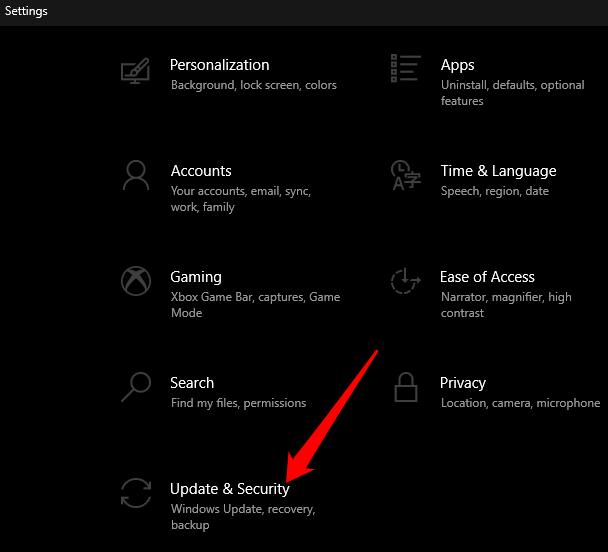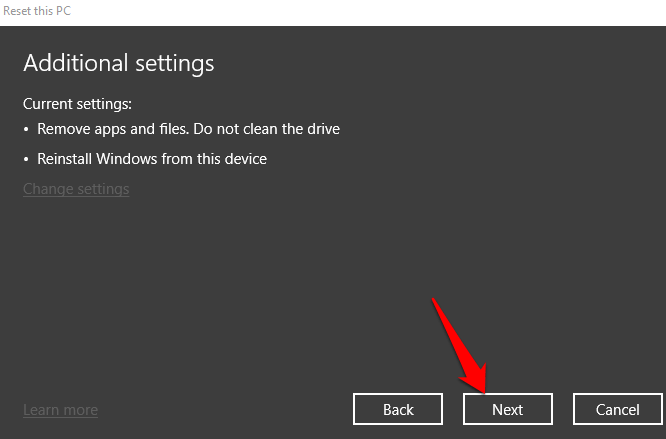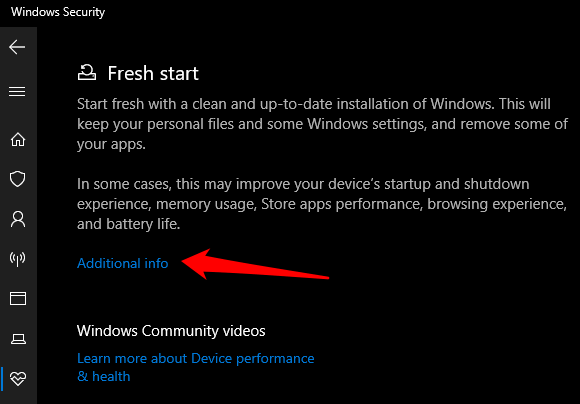Sometimes it's best to start from scratch
Whether you want to start over after a malware infection, or clean up your computer to recycle or sell, knowing how to factory reset Windows 10 will help get it back to running like new.
A factory reset is a last resort when your computer is acting up, running slow, or displaying worrying error messages that software can’t resolve.

Windows 10 ships with built-in recovery options that you can use to reset your PC with or without deleting all your files.
In this guide, we’ll walk you through the steps you need to factory reset Windows 10
How to Factory Reset Windows 10
We’ll look at four different ways to reset Windows 10 to factory settings:
- Reset and keep your files
- Reset and remove everything
- Reset your PC from the sign-in screen
- Reset using the fresh start option
Note: Back up your files before you reset Windows 10, otherwise you may lose some of your important files and you may not be able to recover the deleted data.
How to Factory Reset Windows 10 and Keep Your Files
If you want to reset Windows 10 and still keep all your files, you can do so using the “Keep my files” option. Once the process is completed, the PC will be as good as new. Then you can reconfigure custom settings and reinstall any apps you want again.
- To get started, select Start > Settings > Update & Security.

- Next, select Recovery.

- Select the Get Started button under the Reset this PC section.

- Next, select Keep my files.

- Choose how you want to reinstall Windows: Cloud download or Local reinstall. If you select Cloud download, it may use up to 4GB of data to download and install Windows 10 on your PC. With the Local reinstall, you’ll reinstall Windows 10 from your PC.

- Select Next.

- Select the Reset button.

Your PC will reset to factory settings and preserve all your files. Once the reset is completed, check your PC for any Windows Updates to ensure that the operating system isn’t missing any patches, security updates, or important drivers.
- To check for updates, select Start > Settings > Update & Security and then select Windows Update > Check for updates. If updates are available, Windows 10 will download and install them to your computer.

- You can quickly update missing drivers via Windows Update by going to Settings > Update & Security > Windows Update > Check for updates. Select View optional updates.

- Next, select the Driver updates tab, go to the driver you want to update, and select Download and Install.

Finally, reinstall any apps you had installed before the reset, and then start using your PC as usual.
How to Factory Reset Windows 10 and Remove Everything
With the “Remove Everything” option, you’ll reset your PC and remove all your personal files, apps, drivers, files, and any changes you made to settings. It also removes any apps your PC manufacturer installed.
- To do this, select Start > Settings > Update & Security > Recovery.



- Select Get Started under Reset this PC.

- Next, select Remove everything.

- Choose how you want to reinstall Windows: Cloud download or Local reinstall.

- If you want to erase all your personal files and data completely, select Change Settings.

- Next, toggle the Clean Data switch to Yes, and then select Confirm.
Note: This option is useful if you’re planning to recycle, donate, or sell your computer. It may take about an hour or two to complete but makes it difficult for others to recover any files you deleted. Leaving the Clean Data toggle at No reduces the completion time as it will only remove files. However, it’s less secure.

- Select Next.

- Select Reset.

How to Reset Windows 10 From the Sign-in Screen
If you’re unable to open Windows settings on your PC, you can reset Windows 10 from the sign-in screen.
- To do this, use the Windows logo key + L keyboard shortcut to bring up the sign-in screen.

- Restart your computer by pressing Shift key while selecting the Power > Restart in the bottom right side of your screen.
- Once your computer restarts in the WinRE (Windows Recovery Environment), select Troubleshoot in the Choose an Option screen.

- Select Reset this PC.

- Select whether to keep your files, remove everything, or restore factory settings to continue.
- If you see the Restore to factory settings on your computer, select it. This will remove your personal files, installed software, and reinstall Windows 10 and any other preinstalled apps that came with your computer. Windows 10 will erase everything from the drive and restore it to its original state. If the Restore to factory settings option isn’t available, select Remove everything.

How to Factory Reset Windows 10 Using the Fresh Start Option
With the fresh start option, you can reset Windows 10 and keep your files if you want to start with a fresh copy of the operating system that doesn’t have bloatware or extra software.
However, instead of using a custom image from your PC’s manufacturer, the fresh start option uses the original image of Windows 10 provided by Microsoft.
Note: This may not work for branded computers such as Dell, HP, ASUS or Acer as it may not reinstall certain apps or drivers you may need. Plus, you may not be able to use the custom manufacturer image in subsequent resets.
- To reset Windows 10 using the fresh start option, open Windows Security and select Device performance & health.

- Select Additional info under Fresh start, and then select Get started > Next in the new window to set off the process. Once the fresh start is done, reinstall the apps you want to use.

Once you complete the steps, the original Windows 10 image will be used to factory reset your Windows 10 PC, keeping your personal data.
Scrap it All and Start Over
We hope this guide helped you factory reset Windows 10 and your computer is back to its original state. If you’re using a Mac, and it suddenly starts acting strange, you can reset the PRAM and SMC. Check out our other guides on how to wipe and reinstall Windows 10 or use this easy way to clean install Windows 10 without worrying about the technical details.
Did you manage to reset your computer to factory settings? Share with us in the comments.




